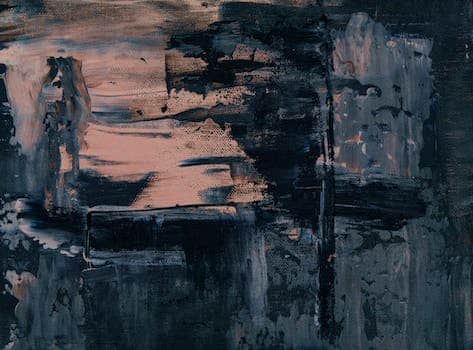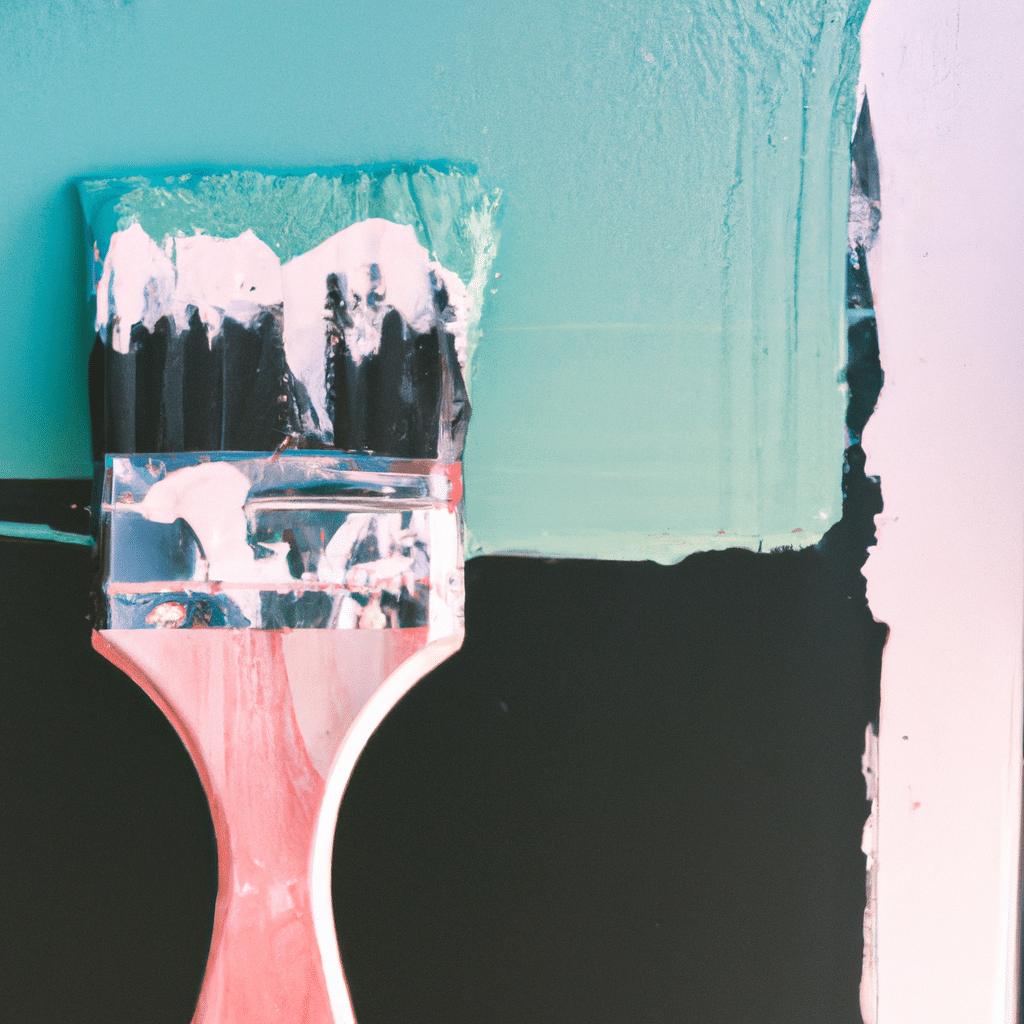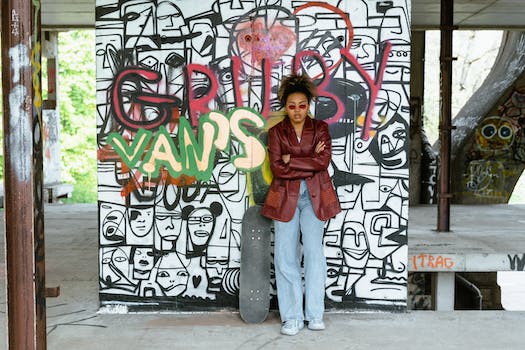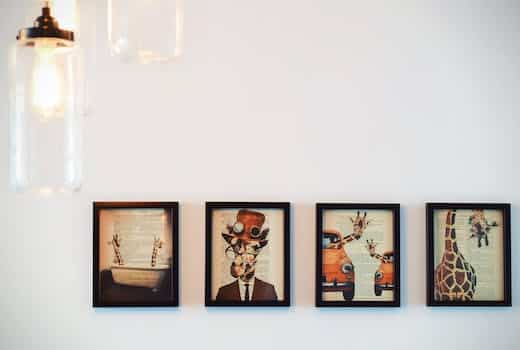Do you want to give your walls more character and charm? Here are ten inspiring ways to add texture to your walls. From imitation finishes to cutting-edge methods, you’ll learn all you need to know to turn your boring walls into showpieces. Get ready to let your imagination run wild and improve the atmosphere in your home with these one-of-a-kind suggestions.
- 1. Introduction
- 1.1. What is textured wall painting?
- 1.2. Benefits of textured wall painting
- 1.3. Popular textured wall painting techniques
- 1.4. How to prepare your walls for textured painting
- 1.5. Choosing the right paint for textured walls
- 2. Textured Wall Painting Ideas
- 2.1. Faux brick textured walls
- 2.2. Wood grain textured walls
- 2.3. Geometric patterns with texture
- 2.4. Textured accent wall with stencils
- 2.5. Metallic textured walls
- 3. Tips for Achieving Stunning Textured Walls
1. Introduction
Painting on textures is a trendy and unique approach to giving walls more character. Using a variety of textures and methods, a dull wall can be transformed into a showpiece. There is no limit to the styles that may be achieved with textured wall painting, from a comfortable and rustic vibe to a modern and sleek appearance. This post will provide you with 10 unique textured wall painting ideas that will motivate you to express your inner artist and improve the overall look of your home.
1.1. What is textured wall painting?
Painting a wall with texture is a popular method for creating a unique and eye-catching design. It’s a common option for individuals who want their walls to look more three-dimensional and for those who want to improve the visual appeal of a whole space. Walls can be painted with texture in a number of ways, including by using textured paint, a textured roller, or stencils and other tools. Depending on the style you’re going for, you can choose a texture with subtle patterns or a more eye-catching design. This method is ideal for older or damaged walls because it not only provides aesthetic appeal but also helps to disguise faults on the wall surface. Textured wall painting is a one-of-a-kind technique to completely alter the look of a room and make a bold design statement.
1.2. Benefits of textured wall painting
Painting textures onto walls is a growing trend in interior design, and with good reason. Painting textured walls in your home is a great way to give it a one-of-a-kind look and feel. We’ll go over the many uses for textured wall painting and give you 10 fresh concepts to work with on your next endeavor. So, let’s dive in and find out how textured wall painting can improve the look of your home.
1.3. Popular textured wall painting techniques
Painting walls with different textures is a common way to make a room feel more three-dimensional and contemporary. Textured wall painting may produce beautiful results, whether you’re trying to draw attention to a specific area or just improve the room’s atmosphere. In this post, we’ll look at 10 unique ways to use textured wall painting to make your walls look like pieces of art. Painting techniques range from the straightforward sponging and ragging to the intricate stenciling and combing. Let’s dig in and learn everything there is to know about painting textured walls!
1.4. How to prepare your walls for textured painting
To get the best effects from a textured paint job, it is essential to thoroughly prepare the walls beforehand. Whether you want to add a textured accent wall or entirely revamp the room’s aesthetic, a smooth and long-lasting finish is guaranteed with the appropriate preparation and application. From cleaning and fixing to priming and sanding, this section will walk you through the steps necessary to get your walls ready for textured painting.
1.5. Choosing the right paint for textured walls
To get the desired impact and improve the overall aesthetic of your area, it is essential to select the proper paint for textured walls. A space with textured walls has a more interesting and sophisticated look and feel. Textured walls, on the other hand, can be more challenging to paint than flat ones. When selecting paint for textured walls, there are a few things to keep in mind to achieve a successful and professional-looking outcome.
The first step is to identify the wall texture. Popcorn texture, stucco, and fake finishes all have their own unique paint needs. A thicker paint, for instance, would be better suited to cover the cracks and give an equal finish on a surface with a coarser texture.
The paint’s shade and finish is the second factor to think about. Darker hues might help to hide flaws while lighter ones draw attention to the texture. The paint’s gloss is also an aesthetic factor. While a glossy finish might make texture pop, a flat or matte one can assist to hide it.
Finally, select a premium paint that has been developed for use on textured surfaces. Paints like these are formulated to stick to textured walls and cover more effectively. They also aid in protecting the finish from damage like peeling and cracking.
Choosing the proper paint for your textured walls after giving these considerations can help you create a visually appealing and inviting atmosphere.
2. Textured Wall Painting Ideas
Painting walls with different textures is a common way to give a room more personality. A simple wall can become an eye-catching design element with the help of the correct materials and methods. Here are 10 unique approaches to painting textured walls to consider for your next endeavor:
First, you can add a stenciled texture to your walls by painting elaborate designs on them. You may give your space a one-of-a-kind, customized style by picking from a wide range of patterns and colors.
Get the look of exposed brick without the expense or maintenance with a faux brick finish. Use a textured paint in a brick pattern, and then go back over it with different colors to make it look more three-dimensional.
Use varying tones of the same hue to make a beautiful ombre effect. Use a lighter color towards the ceiling and work your way down to a darker one near the floor.
Make textured stripes on a wall with painter’s tape and contrasting colors for an interesting look. This method may be used to give any space a lighthearted and contemporary feel.
Metallic textured paint is a great way to make your walls look a little more fancy. This sheen is produced by light reflection and provides an instant visual upgrade to any room.
Create a geometric texture on your wall by taping off sections using painter’s tape and then painting over it with textured paint in bright colors. This method may make any space feel more modern and beautiful.
To give your walls a one-of-a-kind textured look, try the seventh technique: dipping a sponge in textured paint and delicately dabbing it on the wall. Using this method, you may give any room more dimension and individuality.
The number eight faux stone finish is to use textured paint and various paint colors to mimic the look of natural stone. This method is excellent for giving any space a refined appearance.
Applying a crackle medium on top of a painted surface gives it an aged and weathered appearance. A distinctive and aged look is achieved as the crackling medium dries with a cracked texture.
Create a textured wall surface by applying a stucco mixture, as discussed in tip number ten. Different textures, such as smooth, gritty, or swirling, can be achieved by applying the mixture with a trowel and using a variety of techniques.
Use your imagination and these textured wall painting ideas to make your home into a work of art. There is a technique for everyone, whether they like subtle textures or big statements. Now go and get some paint and try some new things out!
2.1. Faux brick textured walls
Walls with a faux brick texture may give any room a distinctive and homey feel. Faux brick textured walls are a terrific way to achieve an industrial look in the living room or a warm farmhouse atmosphere in the kitchen. They improve the room’s aesthetics and functionality simultaneously.
You can use stencils, paint, or textured wallpaper to imitate the look of brick without actually utilizing bricks. The process of stenciling is making a brick pattern with stencils and then painting over it. With this process, you may customize the bricks to any size and color you like.
Faux brick is another alternative for the wall paint. To achieve the appearance of bricks, paint of varying colors must be applied in successive layers. The painted surface can be textured and given depth by using either a sponge or a brush. If you want to change the look and feel of your faux brick walls, this method is for you.
Alternatively, brick-textured wallpaper is a quick and easy alternative. Without the hassle of painting or stenciling, you can give the walls a mimic brick texture with this peel-and-stick wallpaper.
Walls with a faux brick texture look great in any part of the house, from the living room to the bedroom to the kitchen to the bathroom. You can use them to create a feature wall or go all out and cover the walls. Faux brick textured walls are a great way to give your home a unique look and feel, and you can use them however you choose.
2.2. Wood grain textured walls
Wood grain textured walls are a modern and chic way to give your home more personality. This faux wood texture wall treatment will make any room feel more cozy and homey. Faux finishing, stenciling, and other methods can be used to create the appearance of wood grain on walls. Realistic wood grain can be achieved by utilizing a variety of brown tones and applying paint in a deliberate manner. Whether you want to go for a more natural or rustic vibe in your living room, bedroom, or kitchen, this textured wall design is the way to go. Wood grain textured walls are a versatile way to add style to your home, whether you go for a lighter or darker wood tone. If you’re looking to add some sophistication and allure to your home, this textured wall painting idea is worth considering.
2.3. Geometric patterns with texture
Textured geometric patterns are a great way to inject life and intrigue into a space. You may make a truly one-of-a-kind and aesthetically striking wall painting by fusing the geometric forms and lines with the tactile quality of texture. Whether you’re going for a more subdued aesthetic or making a dramatic statement, geometric patterns can be incorporated into a variety of textured wall painting ideas.
Use geometric stencils or templates to make a design that goes all the way around the room. Triangles, squares, and hexagons are just a few examples; more intricate chevron and herringbone designs are also available. These stenciled shapes can be given more depth and visual impact with the addition of texture.
Alternatively, you might use textured wallpaper with geometric patterns. Wallpaper in the form of geometric forms and patterns is plentiful. You may make your walls look more three-dimensional and add a visually interesting pattern by using textured wallpaper.
If you’d rather get your hands dirty, you can try out several painting techniques to make your own textured geometric patterns. Paint can be applied using a sponge or textured roller to create a raised or embossed impression, for instance. Using various colors in layers or varying the intensity of a single color can accomplish this effect on a wall.
In conclusion, textured geometric patterns are a great way to spice up a room’s aesthetic and make it feel more personal. There is a wide range of options for making textured wall paintings with geometric patterns, including the use of stencils, textured wallpaper, and various painting techniques.
2.4. Textured accent wall with stencils
Creating a textured accent wall with stencils is a common approach to give a room more character and draw the eye’s attention. Without the need for costly wallpaper or complicated painting abilities, you can create a one-of-a-kind, personalized look using this method.
First, decide on a stencil design that fits nicely with the aesthetic of the area as a whole. There is a huge variety of stencils to choose from, including both man-made and natural designs.
Get out your roller or brush, your stencil brush, some painter’s tape, and the colors you want to use, and then you’re ready to start painting! Choose paints that will stick nicely to the wall and are of good quality.
You should clean the wall completely and then paint a neutral-colored base coat on it before you start painting. Your stencil design will have a sturdy foundation thanks to this.
When the first coat of paint has dried, tape the stencil to the wall. To begin, load the stencil brush with a little amount of paint and lightly dab off any excess. Carefully spread the paint over the stencil in a uniform layer without smudging the design.
You may achieve a more textured effect by trying out various painting techniques. To achieve a weathered look, stipple the paint with a sponge or dab at it with a dry brush. Don’t be scared to use a lot of various colors in a single design.
Carefully peel the stencil away from the wall while the paint is still wet after you have completed painting the entire stencil pattern. In this way, there won’t be any smearing or smudging.
It’s best to wait until the paint is totally dry before bringing in any new furnishings or decorations. Take a step back and take in your amazing textured accent wall, which is sure to be a topic of conversation.
If you want a textured accent wall that turns out great, remember to take your time, be patient, and test out your painting technique on a tiny section of wall first. If you put in the time and effort, any boring wall may be turned into a work of art.
2.5. Metallic textured walls
The addition of a metallic wall texture may elevate the look of any room. Metallic paints, with their reflective sheen, can dramatically improve a room’s visual appeal. Walls with a metallic texture are a terrific way to achieve a luxurious effect in every room in the house, from the living room to the bedroom.
Walls with a metallic texture can be made in a number of ways. Utilizing paint with metallic particles that generate a textured finish is a common practice. This paint is versatile enough to be applied with a brush, roller, or even a sponge.
Metallic wallpaper with a textured pattern is another choice. You may get the appearance of metal without having to resort to paint. Wallpapers with metallic finishes can have everything from a slight shine to dramatic geometric patterns.
Metallic textured walls can be taken to the next level with a fake finish. Metallic paint and glaze can be used together to create a marbled look. This method yields a visually striking and distinctive appearance that will wow your guests.
Metallic paints come in a wide variety of colors, from traditional gold and silver to modern copper and bronze. You can pick a shade that blends in with the rest of your furnishings, or you can pick one that stands out.
In conclusion, metallic textured walls are an original and fashionable approach to enhancing the aesthetic appeal of a room. There are several alternatives available, whether you want a subtle metallic sheen or a big metallic statement. When metallic textured walls can add a sense of elegance to any room, there’s no reason to settle for plain ones.
3. Tips for Achieving Stunning Textured Walls
The results of successfully achieving textured walls can be breathtaking. Textured wall painting is an innovative and practical method of accomplishing any of these goals, as well as improving the aesthetics of a room as a whole. To help you create stunning textured walls, consider these suggestions.
One must first adequately prepare the surface before beginning any painting project. Remove all filth, grease, and peeling paint from the walls. Spackling compound and sanding will smooth up the surface, making it ready to be painted.
Pick the correct texture from a wide variety of subtle to striking possibilities. When deciding on a texture, keep the room’s design and function in mind. Whether you choose to use stucco, sponge painting, faux brick, or even just a textured roller, you have plenty of options.
Third, try with new color schemes; textured walls are perfect for showcasing your creativity. Create an eye-catching look by playing around with different tones, colors, and lighting. You have the option of going with a monochrome plan for a refined and understated aesthetic, or going all out with bright, eye-catching hues.
Fourth, apply the texture using the right methods; your approach will have a significant effect on the final product. Sponging, stippling, and rag rolling are just a few of the methods that may be used to make one-of-a-kind patterns and textures. Before applying the texture to a full wall, it is recommended to test it out on a smaller area or sample board.
Fifth, give thought to lighting: Proper lighting can do wonders for the appearance of wall texture. Try with various lighting setups to see what brings out the texture and what makes for the most captivating shadows. Lighting options such as wall sconces, recessed lighting, and spotlights can be used to highlight the texture of your walls.
If you’re intending on texturing numerous walls in the same space, it’s crucial to keep the textures and colors uniform. As a result, the area will feel more coherent and attractive to the eye.
Don’t be scared to try new things; textured wall painting offers a lot of room for personal expression. If you want to give your walls more depth and character, don’t be afraid to combine textures, try out new techniques, or put in unexpected materials like cloth, wood, or metal.
Keep in mind that beautiful textured walls are the result of hard work, practice, and attention to detail. Relax, think things over, and have fun with the design process. The completed room will be an expression of your individuality and ingenuity.
3.1. Start with a clean and smooth surface
Having a clean and smooth surface is essential before you begin painting your textured walls. The paint will stick better to the surface, creating a more beautiful final product. If you want to paint on textured walls, here’s how to get a smooth, clean surface:
First, use a light detergent and little water to clean the walls of any debris, dust, or grease. For more stubborn stains, you can also use a TSP (trisodium phosphate) solution. Walls should be washed and dried properly before moving forward.
Check for and fix any cracks, holes, or dents in the walls. Fill or spackling compound can be used to hide these flaws. Use sandpaper to level up the surface and polish the mended parts.
Third, sand the walls lightly with fine-grit sandpaper to level out any rough spots. In the end, you’ll have a smoother canvas to work with.
Apply primer to the walls; this step is especially important if you are painting over an existing coat of paint or if the wall’s texture is particularly rough. Priming a surface before painting makes the paint last longer, gives the paint a stronger grip, and results in a more uniform coating.
If you want your textured wall paint job to turn out well, the first step is to make sure the surface is clean and smooth. By adhering to these guidelines, you may give your room a professional look and feel.
3.2. Use the right tools and materials
Painting and refinishing furniture is a crucial step in upcycling initiatives. A new coat of paint may completely change the look of a piece of furniture that has seen better days, making it perfect for your personal decor. There are a few things to keep in mind whether you want to start from scratch or just give the paint a new coat of life.
To begin with, it’s crucial to get ready. It’s important to give the furniture a thorough cleaning before painting so that any grease or grime can be easily wiped away. Lightly sanding the surface prior to painting improves paint adhesion. Also, before putting a new coat of varnish or finish, the old one must be stripped off the furniture.
The paint you use is also crucial. Use paints that are made for furniture and are of a high quality. Think about if you’re going to be painting wood, metal, or plastic, and choose a paint accordingly. You may give your furniture more character and individuality by experimenting with paint and stain.
Take your time and use thin, even layers of paint while actually painting. Apply a primer to the surface first, and then apply many coats of paint on top of that. It’s important to wait for each coat to dry before moving on to the next. Doing so will guarantee a flawless, expert look by eliminating the possibility of streaks and drips.
Finally, remember to cover your freshly painted furniture. The paint can be protected and made to last longer if a clear sealer or varnish is applied over it. If you want your upcycled furniture to stand out even more, you might decorate it using stencils or decals.
In general, painting and refinishing furniture is a great method to give it fresh life. With the correct tools and some ingenuity, you can make your furniture into unique and eye-catching pieces that reflect your personality.
3.3. Experiment with different textures
Common methods of upcycling furniture include decoupage and collage. Furniture can be decorated using decoupage by adhering paper cutouts or images to the surface with an adhesive. Using this method, you can customize furniture with personalized patterns and coloring. Collage, on the other hand, is a method of creating a textured and visually appealing surface by affixing pieces of cloth, paper, and other objects together. There is no limit to what can be done using decoupage or collage on old or worn out furniture to make it look lovely and unique.
3.4. Consider the lighting in the room
Common methods of upcycling furniture include the use of stencils and stamps. Using these methods, you may give your furniture a one-of-a-kind look with your own designs and patterns. Stenciling is the process of applying a pattern on an item of furniture using a stencil. You can use paint, stencil brushes, and adhesive stencils to do this. In contrast, furniture can be stamped with designs made using stamps or even found things. Because of the wide variety of materials that can be used, this method encourages exploration and innovation. The options for repurposing antique furniture through stenciling and stamping are practically limitless.
3.5. Practice on a small area before tackling the whole wall
Recovering and reupholstering old furniture is a common upcycling method. Changing up the upholstery and padding on some vintage chairs can give them a whole new lease on life. This procedure not only aids in extending the life of furniture, but it also gives it a chance to get a new look and feel. Chairs, couches, ottomans, and even headboards can all benefit from a new layer of upholstery. A sewing machine, thread, and some basic sewing knowledge are all you need to get started. You can make your old furniture look brand new with a little imagination and the will to do it yourself.
Conclusion
In conclusion, any room can benefit from the unique and eye-catching addition of these 10 inventive textured wall painting ideas. There is a wide range of options to discover, from strong geometric patterns to delicate textures. Whether you want to make a bold statement or set the mood for an intimate gathering, textured wall painting can do the trick. Get creative and try out some of these tips to give your home or workplace a new and modern look and feel.






These 10 innovative and imaginative DIY home decor ideas from [object Object] provide a refreshing approach to enhancing ones living…